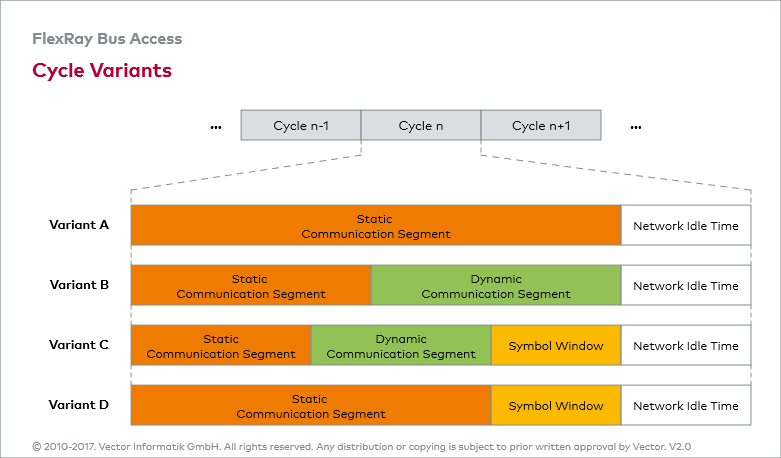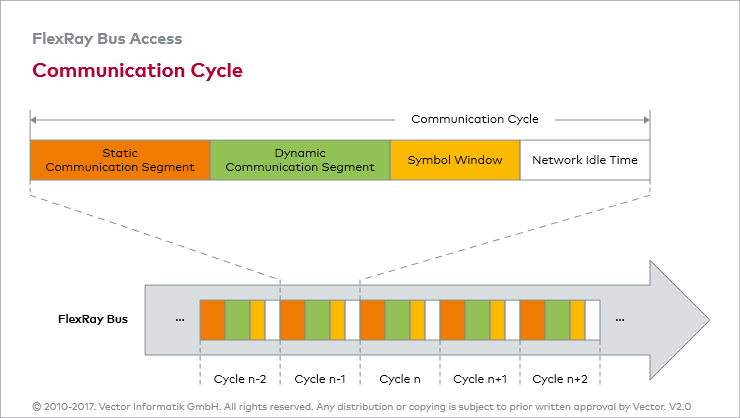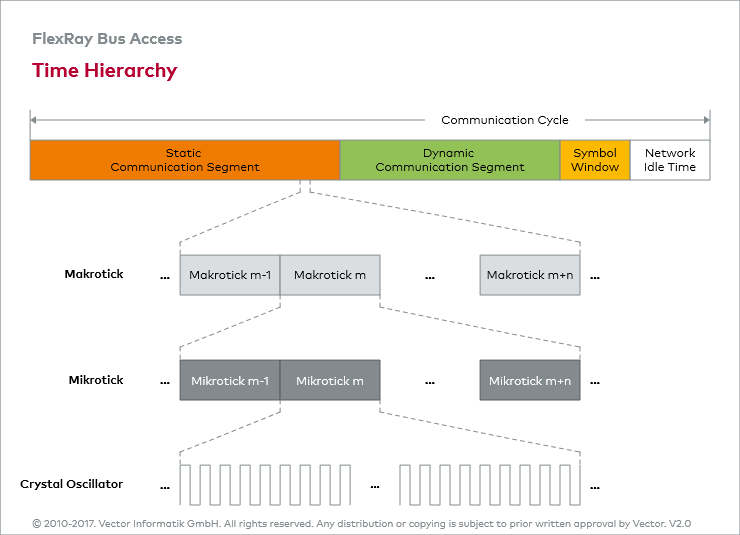Communication Cycle
Data communication in a FlexRay cluster is periodical and is based on a schedule. The communication cycle is composed of at least two time segments, the static segment and the network idle time (NIT) segment. The static segment is used for deterministic transmission of messages. The NIT segment is needed to synchronize the local clocks. No data communication occurs during the NIT segment.
Optionally, the communication cycle may be extended by adding the dynamic time segment and a symbol window. The dynamic time segment is used for event-driven message transmission; if it is included it follows the static segment. The symbol window serves to transmit symbols. The collision avoidance symbol is used to indicate the start of the first communication cycle to a FlexRay node. The media test symbol is used for testing of a bus guardian, and the wake-up symbol for waking up the FlexRay cluster.
Because only the static segment and the NIT segment are mandatory for a cycle, four cycle variants can be distinguished. The figure “Communication Cycle” shows a cycle exhibiting all possible time segments: static segment, dynamic segment, symbol window and NIT.
A communication cycle is made up of a defined number of macroticks, which are assigned to the individual segments. The macroticks are composed of a number of microticks, the smallest time unit of the local clocks. Due to differences in crystal oscillator frequencies, which results in microticks of different lengths, the macroticks of different FlexRay nodes may be composed of different numbers of microticks in order to get a synchronized macrotick.



